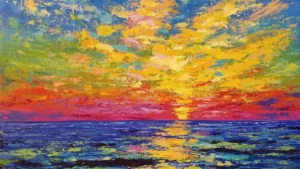Haven’t you heard of the word ‘Graffiti’? However, we bet you must have seen one earlier in your Soft Skills: How to Inculcate Soft Skills in Children?. It’s so common these days that you can’t stay ignorant of it.
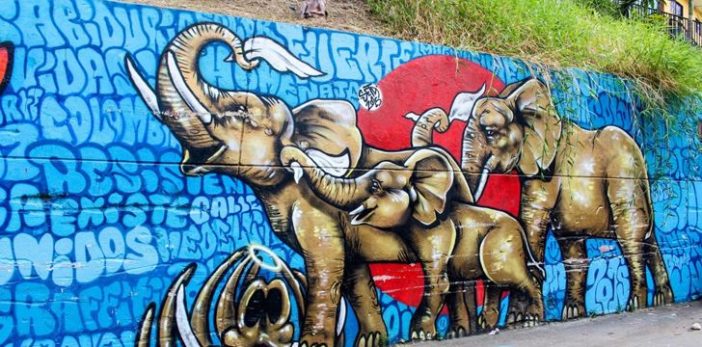
Graffiti is the painting, writing, or drawing on the walls of the building, buses, metros, or streets done by some wannabes who are madly in love with art. They like to showcase their talent in public where a large number of people can see their work and embrace it. They want to get recognition and stand out from the crowd. It’s so bewitching that you can’t take your eyes off it.
History
Graffiti is derived from the Italian word graffito, which means ‘scratched.’ It’s formed from the Greek word “graphein,” which means ‘to write.
In historic times scratched walls were inscribed as Graffiti. Figures in the catacomb of Rome and Pompeii are some old-time inspiration or discovery of art. One of the modern Graffiti known from old times was ‘The Monikers’ created by hobos. Not just Romeos and Greeks, American graffiti Independence Rock was also found as an ancient discovery. Contemporary Graffiti is inspired by hip-hop culture.

The motive of people from the past was to mark their territory, voice their demands or change and vocalize their suppressed thoughts.
Is Graffiti legal or illegal?
It’s illegal in most places. After all, spraying paint on walls without the permission of the owner is offensive to many. Even under The Prevention of Defacement of Property Act, 1976, street art is illegal in India. However, many artists say that the Indian laws are slightly vague. Therefore, it can’t be called illegal.

However, graffiti writers of India and South Asia are safer as compared to the western countries where punishment and fines are severe. But with the proper consent of the property owners, this work could be made legal. Its practice is considered vandalism.
Some places where Graffiti is legal are
- Zurich
- Switzerland
- Paris
- France
- Warsaw
- Poland
Places with exquisite Graffiti in India
If you ever wish to witness grand artistry, you must visit these places in India which have exemplary art.
- Mumbai
- The Dada Saheb Mural
- Bandra Murals
- Delhi
- The Khirki village
- Lodhi colony
- Streets of Delhi – Nehru place
- Goa
- Panjim
- The Kala Academy
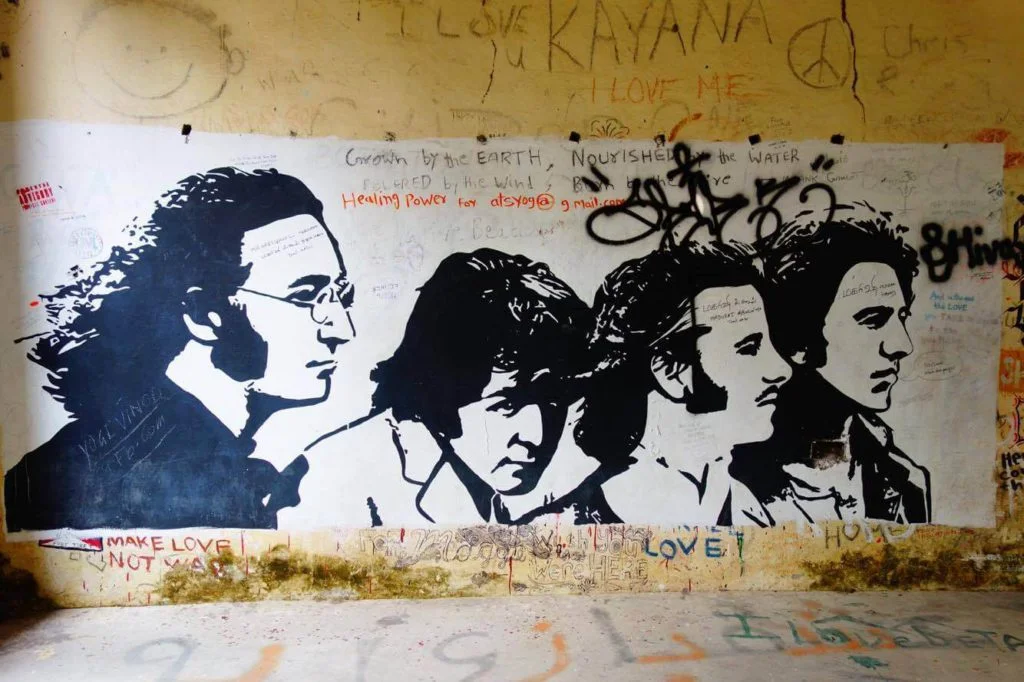
- Kochi
- Kochi Fort
- Murals of Bob Marley, MJ, Joker, James Bond
- Kolkata
- Elgin road
- Beni Nandan Street
- Banglore
- St Marks Road
- Yelahanka
- M. K Road
- Chennai
- Egmore Railway station
- Stella Maris college
Career aspects
With the growing awareness, Graffiti is gaining its advancement. Graffiti is getting acknowledged everywhere. Eventually, sources of income have opened too. Now, organizations hire artists to work for them.

Graffiti artists can organize their workshops and train others and earn. You can also look for online freelancing work and sell your services. Moreover, you can work with some renowned companies and legally paint buildings, canvas, or walls. Some corporations ask you to paint for ads promotion to make their brands excel in the market. Now many big companies pay well. Therefore, there are chances that many more big opportunities might open. Hence, there’s a lot more hope in this emerging art.
Some interesting facts about Graffiti
- It started when Darry Mc Cray wrote, ‘Cornbread loves Cynthia’ to express his love.
- ‘Graffiti’ is the plural word of ‘Graffito.’
- It’s 4th element of Hip Hop.
- Mostly the artists are ‘writers,’ and they have their unique tag.
- The forefather of modern Graffiti is a Greek American kid, Demetri.
- The artists prefer to stay anonymous to hide their identity.
- The paint contains a Volatile Organic Compound (VOC) which leads to forming the ozone layer.
Graffiti and Street Art difference
Both being an art form practiced on the street or other public walls are almost the same. On the other side, art can be a fusion of both that we get to see around the streets. However, they’re differences that we should know to avoid any confusion.
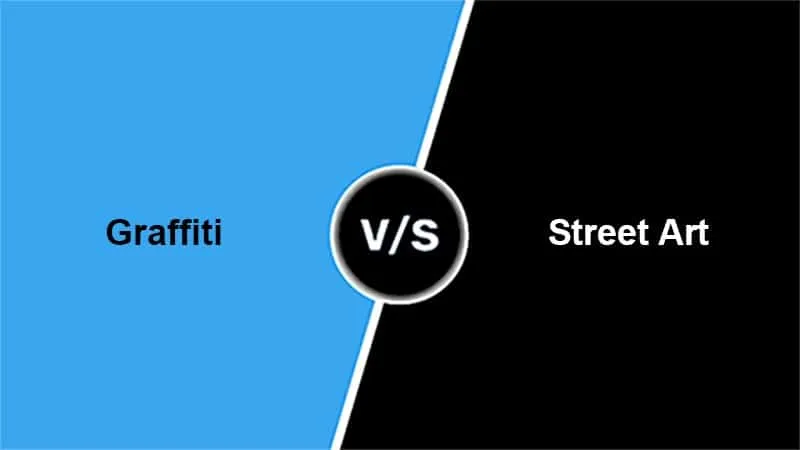
Graffiti is more of an illegal and vandalism act that works without permission, while Street art is legally commissioned to work on some particular project. Street Art is mostly inspired by the image and is trained by painters, while Graffiti is mostly word-based, and the artists create tags and are called writers.
Graffiti uses spray containing aerosols, while Street Art uses color paints. They work on requirements, while Graffiti artists are self-taught misfits. Their sole purpose is to stand apart and spread their message through art.
Popular Indian Graffiti artists
- Kajal Singh – She is the first female graffiti artist in India. Also known as ‘Dizy’, She uses blocks, bright colors, and bubbles in her work. She has worked in European cities and is a name in Berlin.
- Zine– Zine is from New Delhi. He call his style of work as ‘wildstyle.’ He is passionate about rap, music, and Graffiti; therefore, loves exploring his work and having fun with colors.
- Yantr – He uses contemporary art. His work is spread all over India from Assam to Delhi. His famous work is ‘Parmanu Muskan,’ in which Buddha is wearing a mechanical mask. Yantr painted India’s tallest Mural on a water tank depicting Mission Leopard. He takes his inspiration from machines.
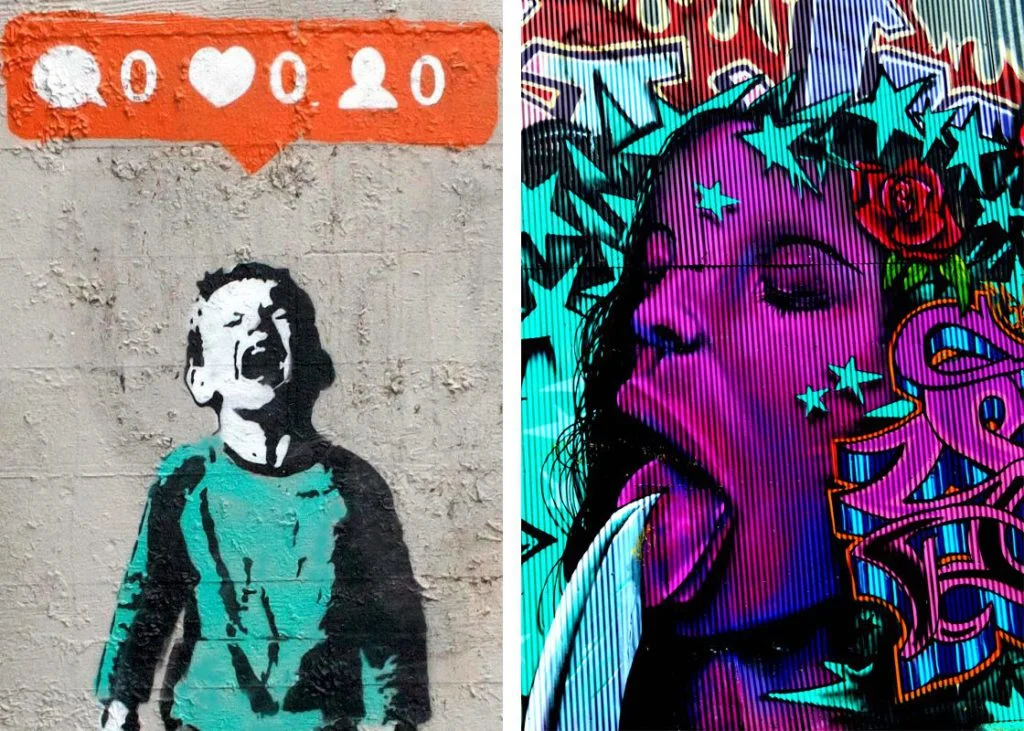
- Shila Shiv Suleman – She is an award-winning artist from Bengaluru. Her work depicts the story of technology, social issues, and magical realism. Her art form speaks of some fearless depiction. Some of the famous examples are – two gay men embracing each other, transgender women in Pakistan, and refugees in Syria.
- Zake – Zake is a graffiti artist based in Mumbai. He has represented India by participating in the Street of Style Festival in Brazil. Since childhood, he was passionate about drawing and studied in art school at Bandra.
Final Words
Who doesn’t want to have a beautiful city soaked in murals of all colors? It’s a pleasure for our eyes to see. The word which can inspire us, art that brings energy and joy in us! That’s what Graffiti can do.
Share with your friends



